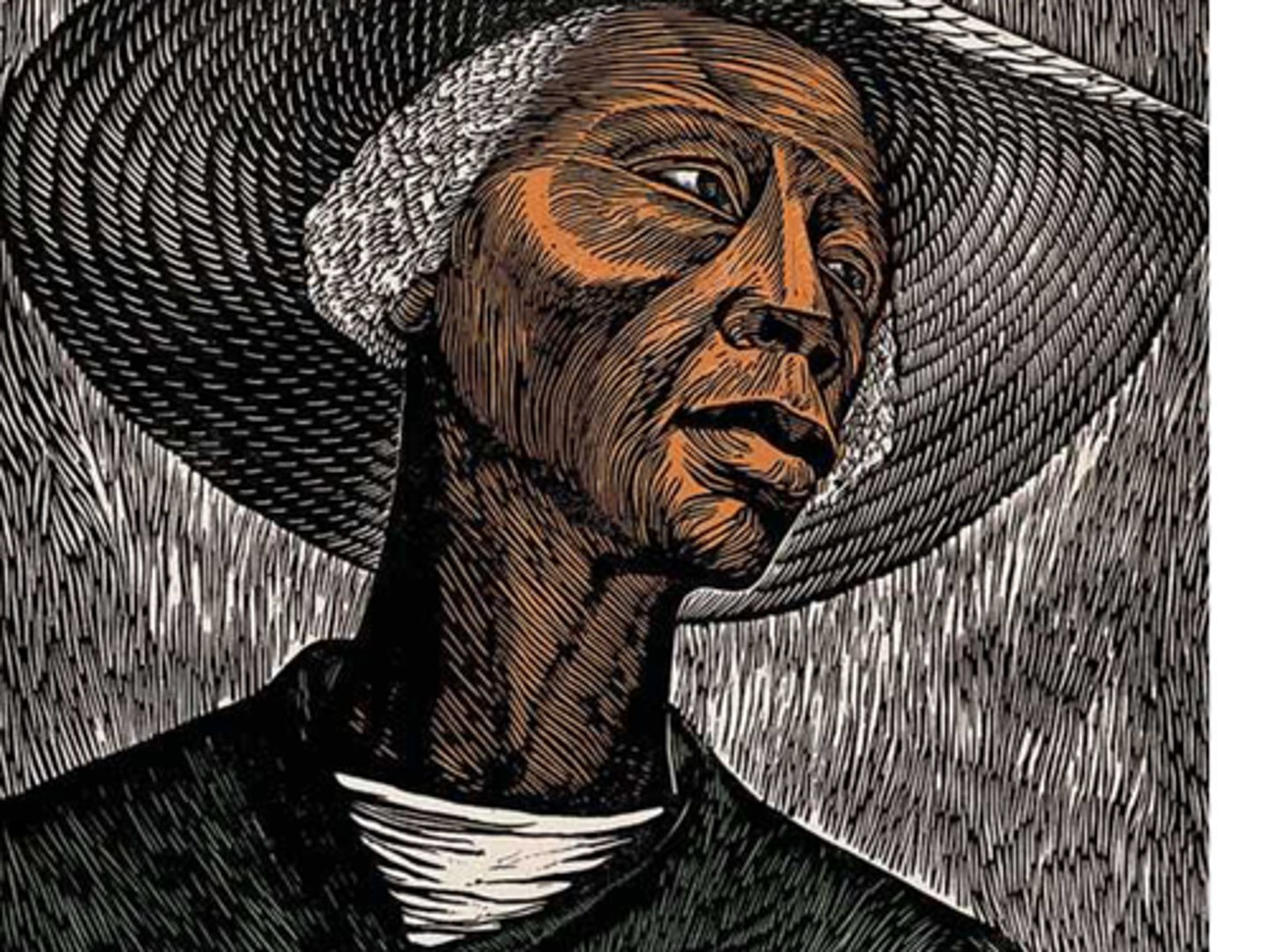GACE Test for Art Education Review
1/196
There's no tags or description
Looks like no tags are added yet.
Name | Mastery | Learn | Test | Matching | Spaced |
|---|
No study sessions yet.
197 Terms
Slip
Clay suspended in water.
Pushing and pinching with ones fingers
Digging parallel channels with a comb
Using a slip to press on scored pieces of moist clay.
Appropriate ways to produce a textured surface on a moist clay project that is going to be fired.
The wrap
In textile manufacture, is a term for the threads of a loom that supports the weave and thus serve as the framework for woven cloth.
Indigo
A natural colorant traditionally used to dye cotton fibers in deep blue.
Cloisonné
In jewelery, the process in which fine metal wire is used to organize colors that are fused into hard enamel-like surface.
Welded seems
A directly fabricated metal sculpture can be distinguished from a cast metal sculpture because the fabricated sculpture has...
Making paper
Electric mixers, window screens, lint from clothes dryer, deckless, and couch sheets are typically used for
Thikness
The guage of a wire refers to the wire's...
Extruder
Piece of equipment that can be used in a ceramics studio to create desired forms.
Lost wax
A technique of casting metal in a plaster mold.
True porcelain
Requires the highest firing temperature.
Paper mache
Is a medium that involves gluing multiple layers of paper onto an armature.
Exact shapes of letters
A designer who carefully selects a particular typeface to use in a design is likely to be most concerned with
Bitmaps
In digital imaging, series of pixels that can be used to compose images.
Polarizing
Foreshortening
Is the representation of any object on a two-dimensional surface in such a way that the object appears to advance or recede.
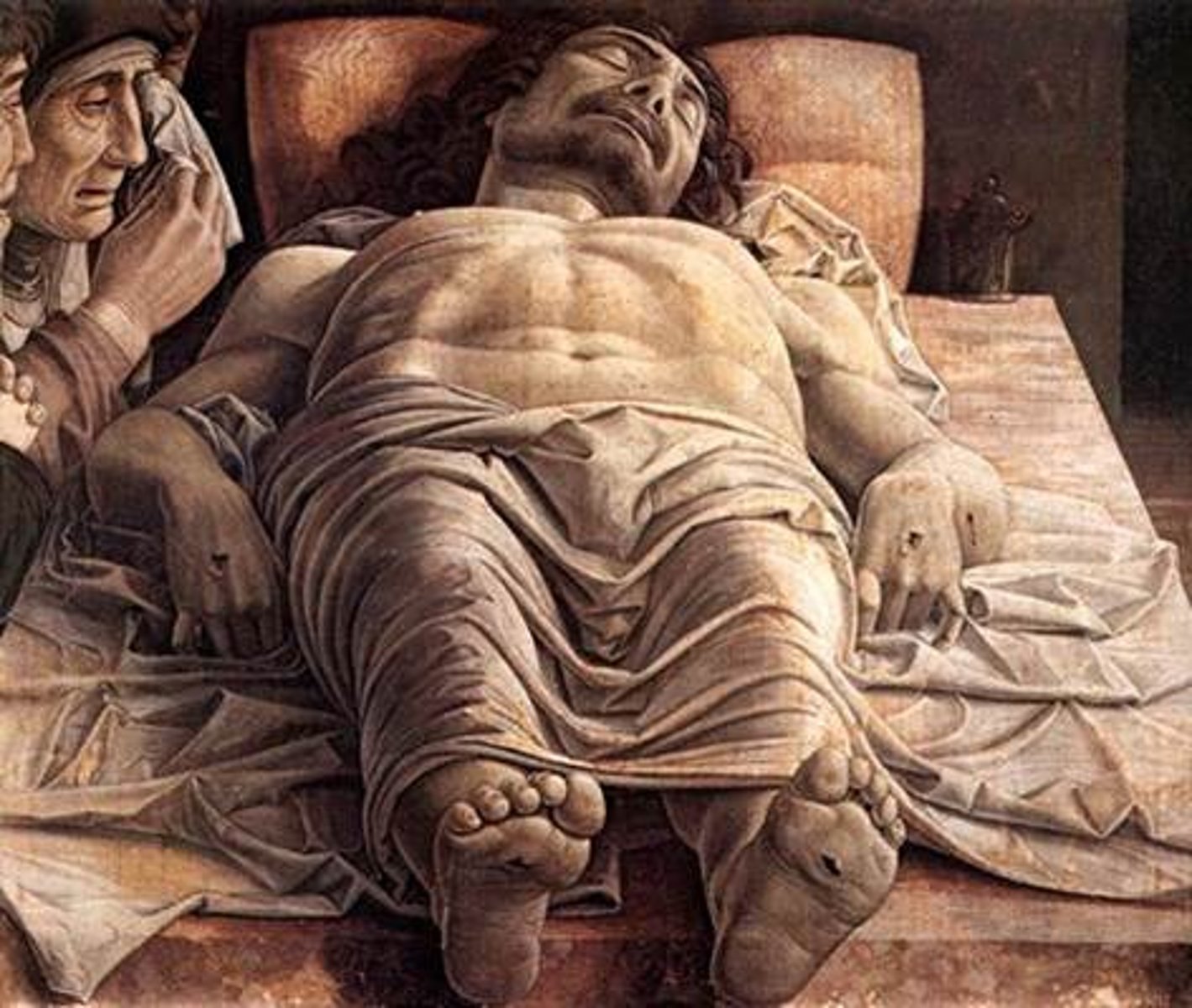
Juxtaposition
Refers to the use of unrelated images, materials, etcetera.
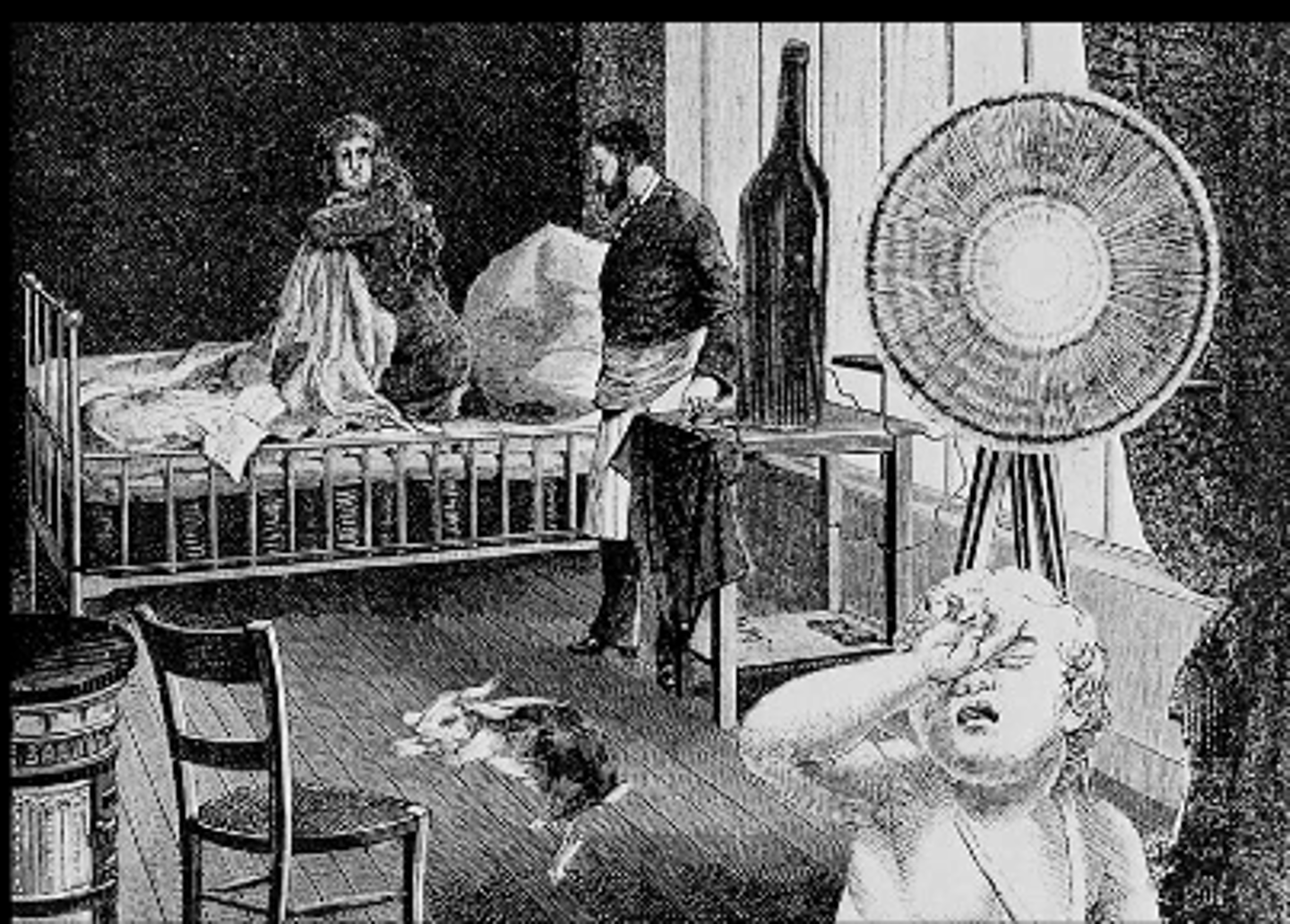
Shapes will appear flat
When bold, heavy outlines around shapes are maintained in a composition.
Western Art
A traditional way to enhance a viewer's perception of space and distance in a landscape image is to make background colors cooler and lighter in value.
Sense of equilibrium
Artist's use of balance
Reading the product's labels and proceeding according to directions
Is the most reasonable action to take for an artist whose work requires to use a specific hazardous product.
Gesture drawing
Generally characterized by an emphasis on movement.
Hard-edge paintings
an even, solid application
Impasto
Refers to the process of using thick applications of paint.
Proof print
Is used in printmaking to check whether the image for a print needs more work.
JPEG format (.jpg)
Compresses file size by selectively discarding data.
White balance
Keep colors accurate under a variety of light conditions.
Greenware
Refers to pottery that has not been bisque fired.
Kouroi
Refers to Archaic Greek statues whose poses- rigidly frontal with clenched fists- recall the stance of Ancient Egyptian statues.
Georges Seurat's paintings
Are more notable for containing static figures and a sense of optical surface movement.
"Genre painting"
is an art historical term that specifically refers to painted depictions of everyday life that shows ordinary people doing ordinary things.
The layout and design of the Temple of Heaven in Beijing, China
are intended mainly as a symbolic expression of the connection between imperial and cosmic orders.
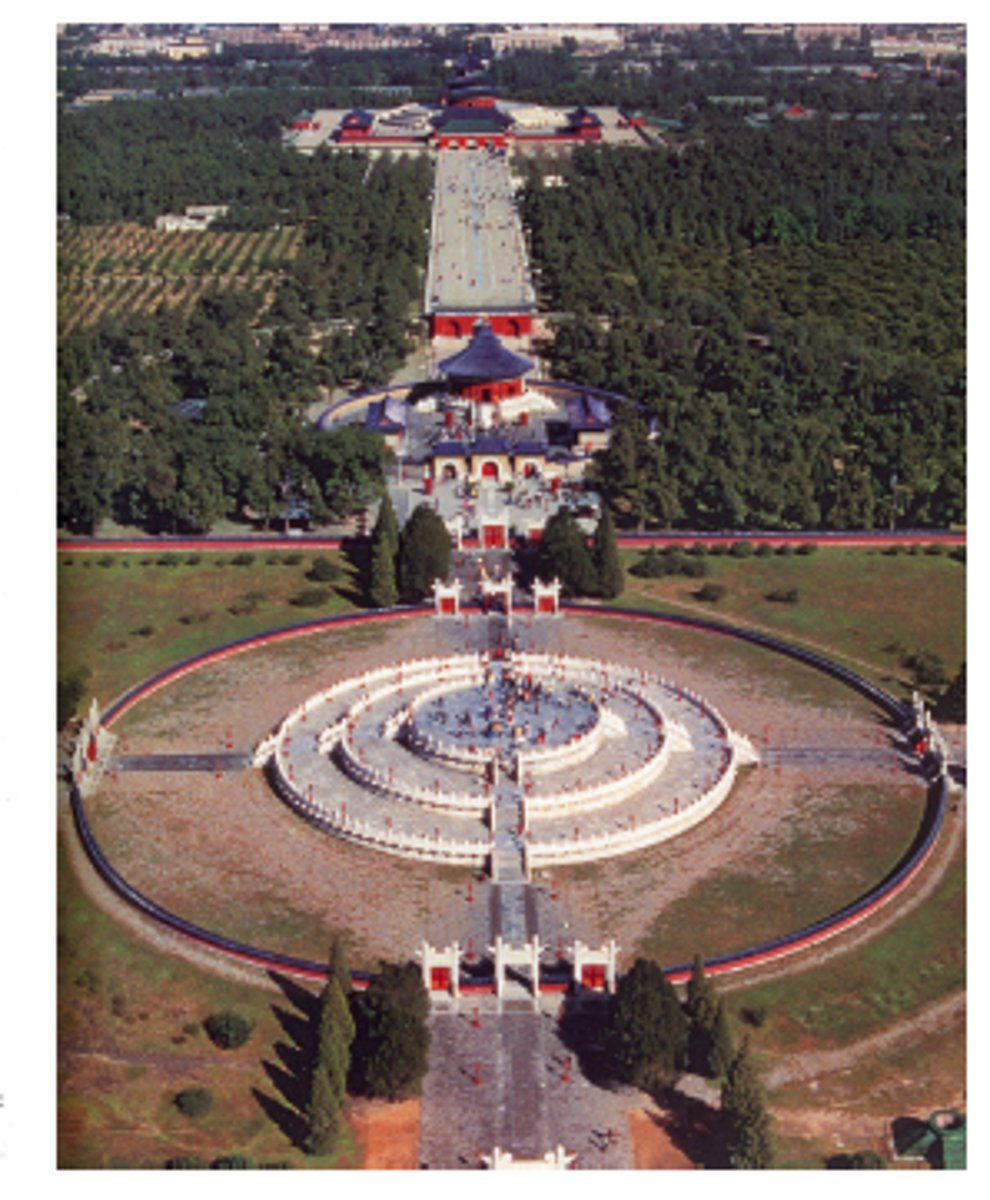
Typical decorative motif of Islamic architectural mosaics
Art that focuses on the painting of every subjects and individuals
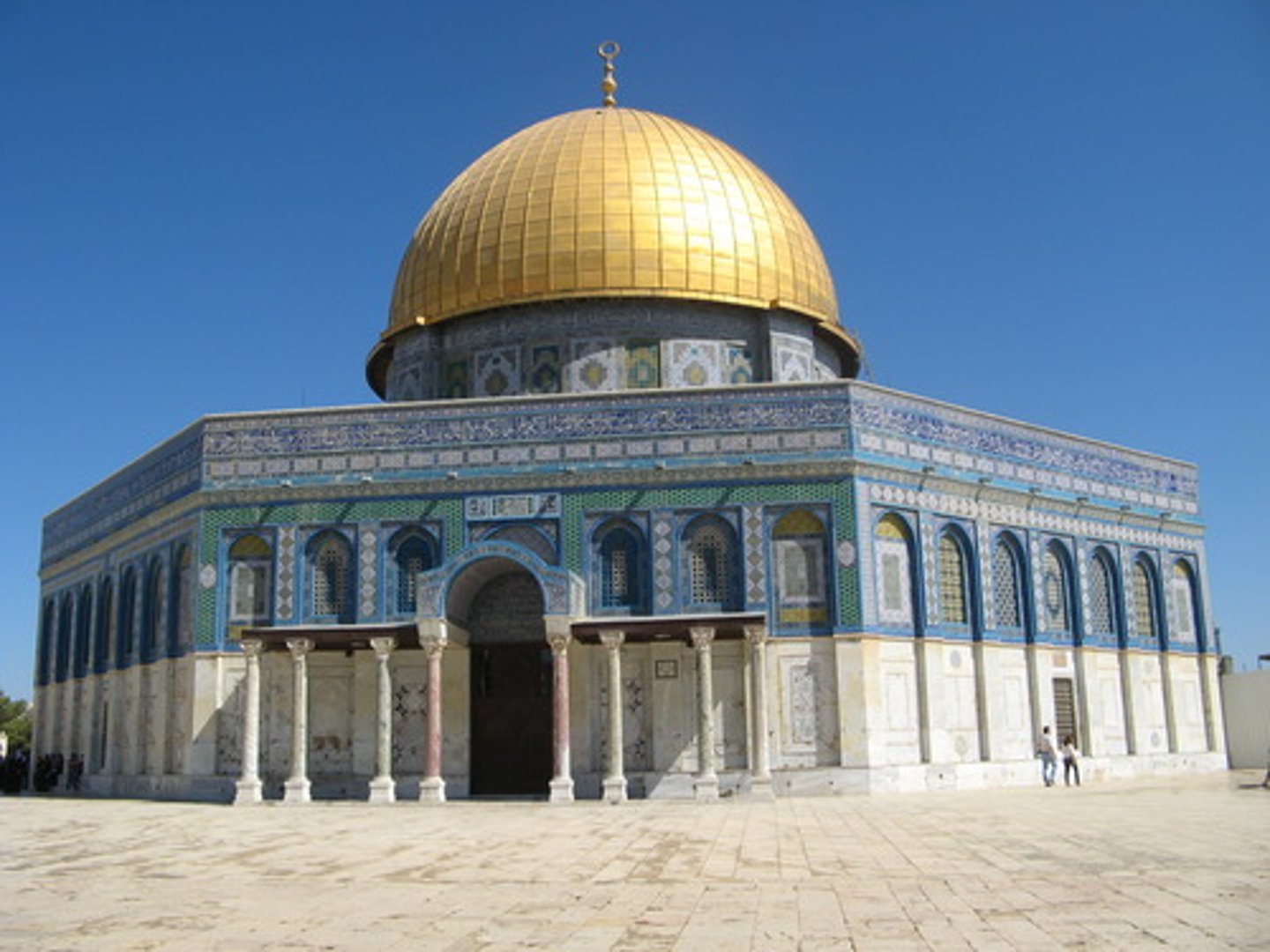
Cindy Sherman
Best known for her work in photography.
Bill Viola
contemporary installation artist who uses image projection and video.
Conceptual artists
abandoned the intention of making traditional, saleable art objects.
Humanism
The Renaissance concept that the artist should be a scholar as well as a craftsman
After scientifically studying the sky Leonardo Da Vinci Systematically developed
Aerial perspective
The Arts and Crafts movement
Grew in England out of the concern that machine-made objects were replacing handmade objects.
Institusionalism
The aesthetic philosophy that claims that the value of work of art is determined by museums and galleries
Stylization
Refers to an artist's application of an exterior order or design to visual image
Eugène Delacroix
focused on exotic places, political freedom, and violent struggle.
Tense and watchful
Is the best way to characterize Michelangelo's sculpture.
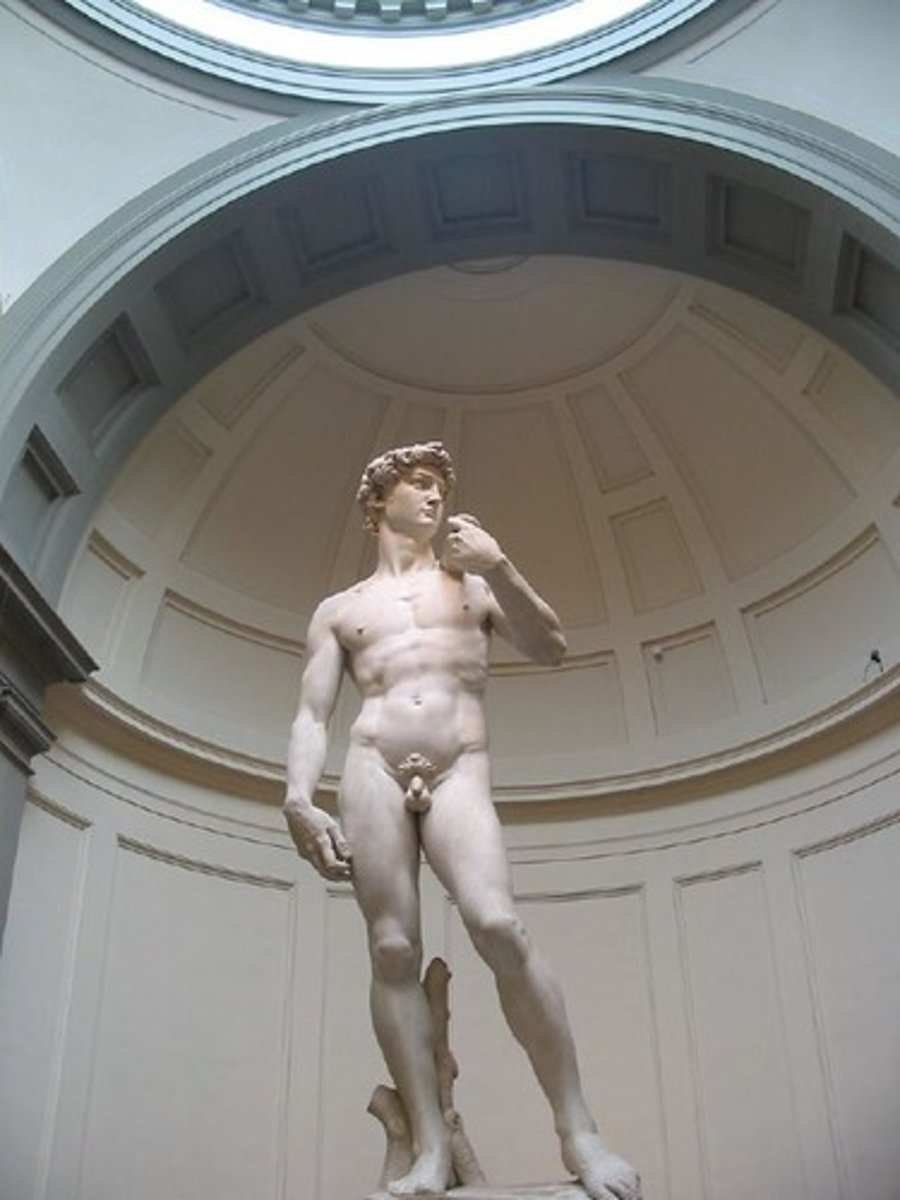
" I want to work with the land and not dominate it. I had an impulse to cut open the earth...an initial violence that time would heal. The grass would grow back, but the cut would remain.
Maya Lin, Vietnam Veterans Memorial, Washington, D.C.
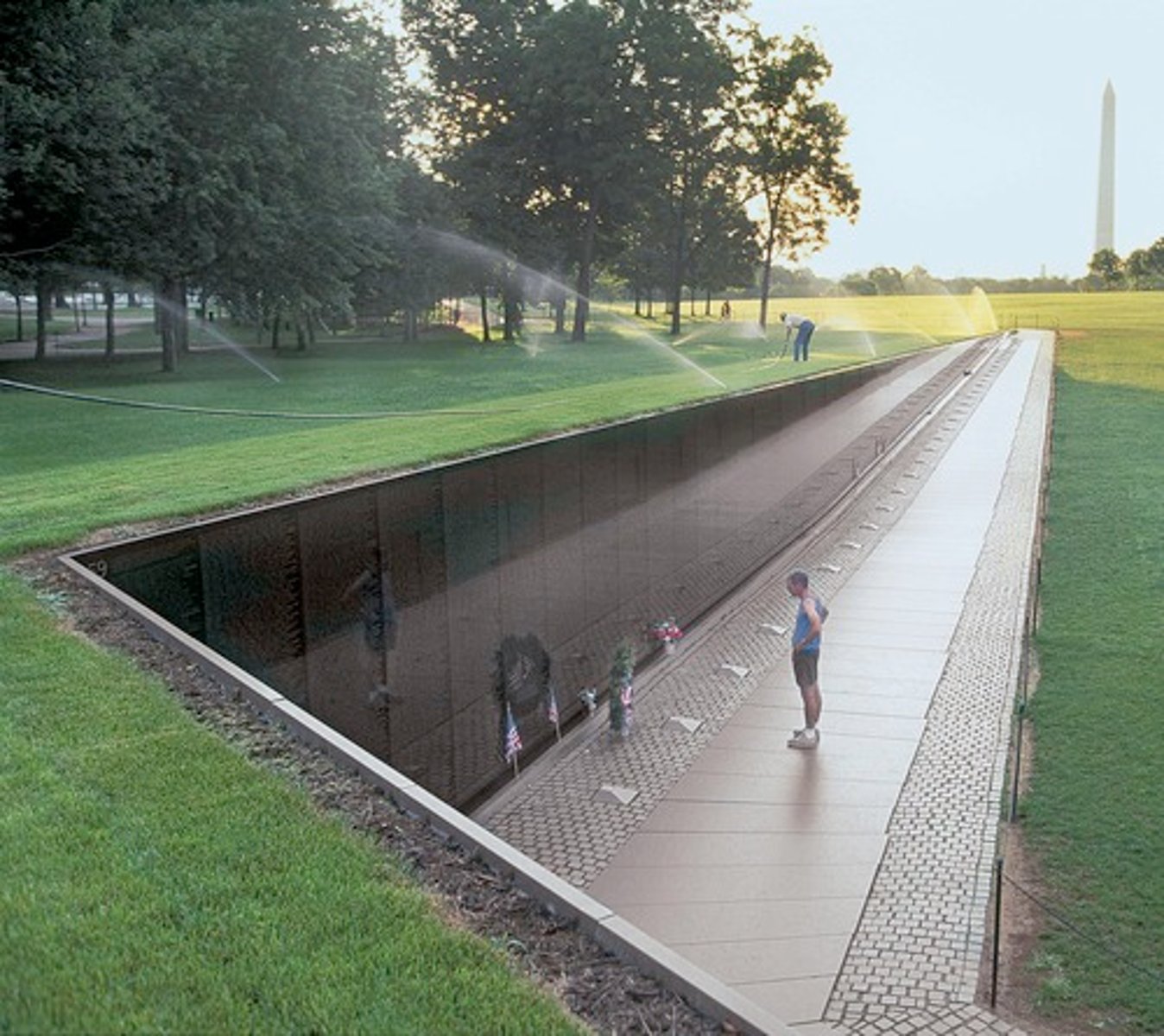
Repetition
is the visual key that ties Eva Hesses' installation piece together, unifies it, and controls the viewers' eye
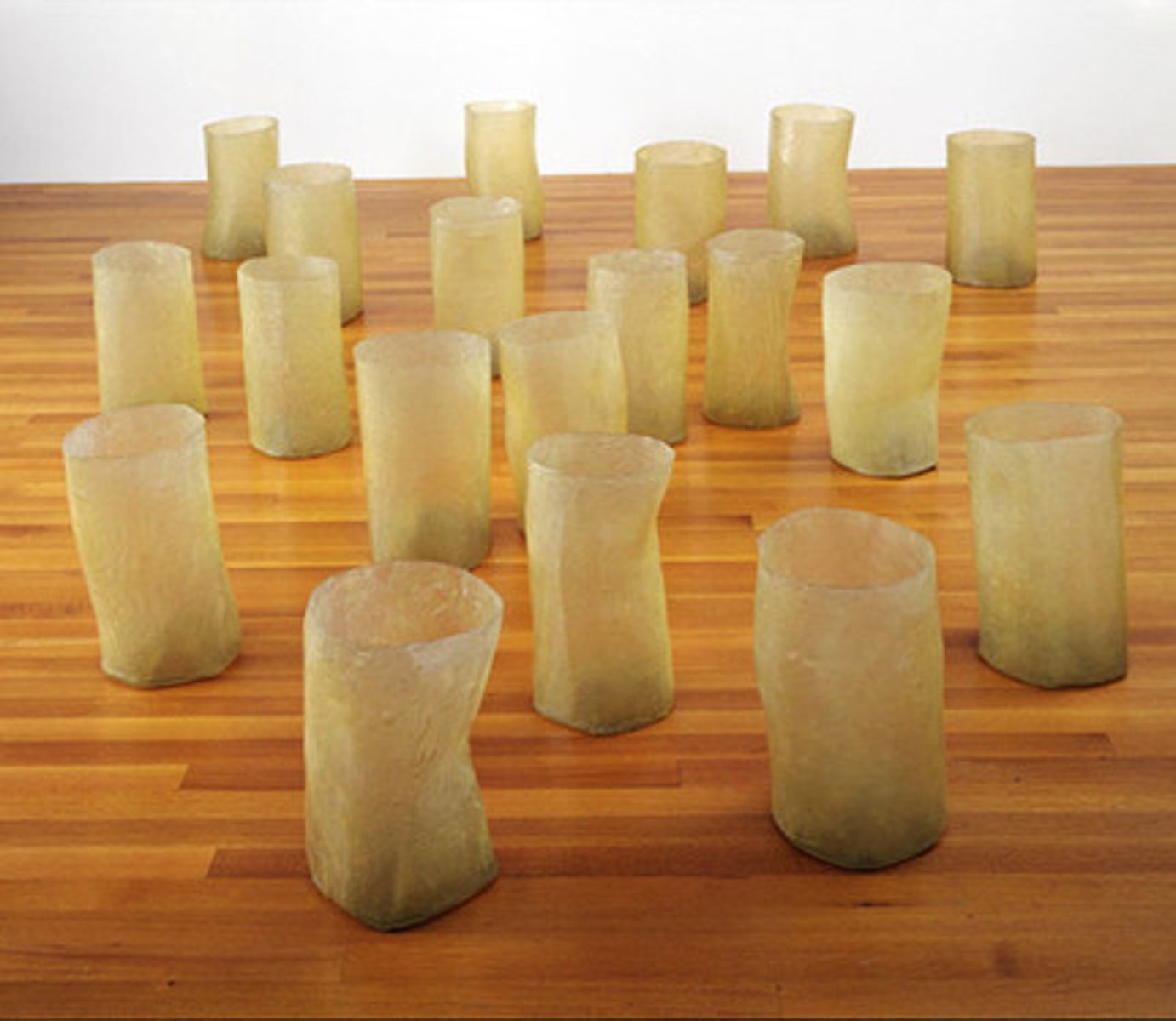
Overlapping shapes
In a nonrepresentational work of art, is most likely to contribute to a sense of spatial depth.
Asymetrical balance
The way the elements of David Smith's sculpture is organized.
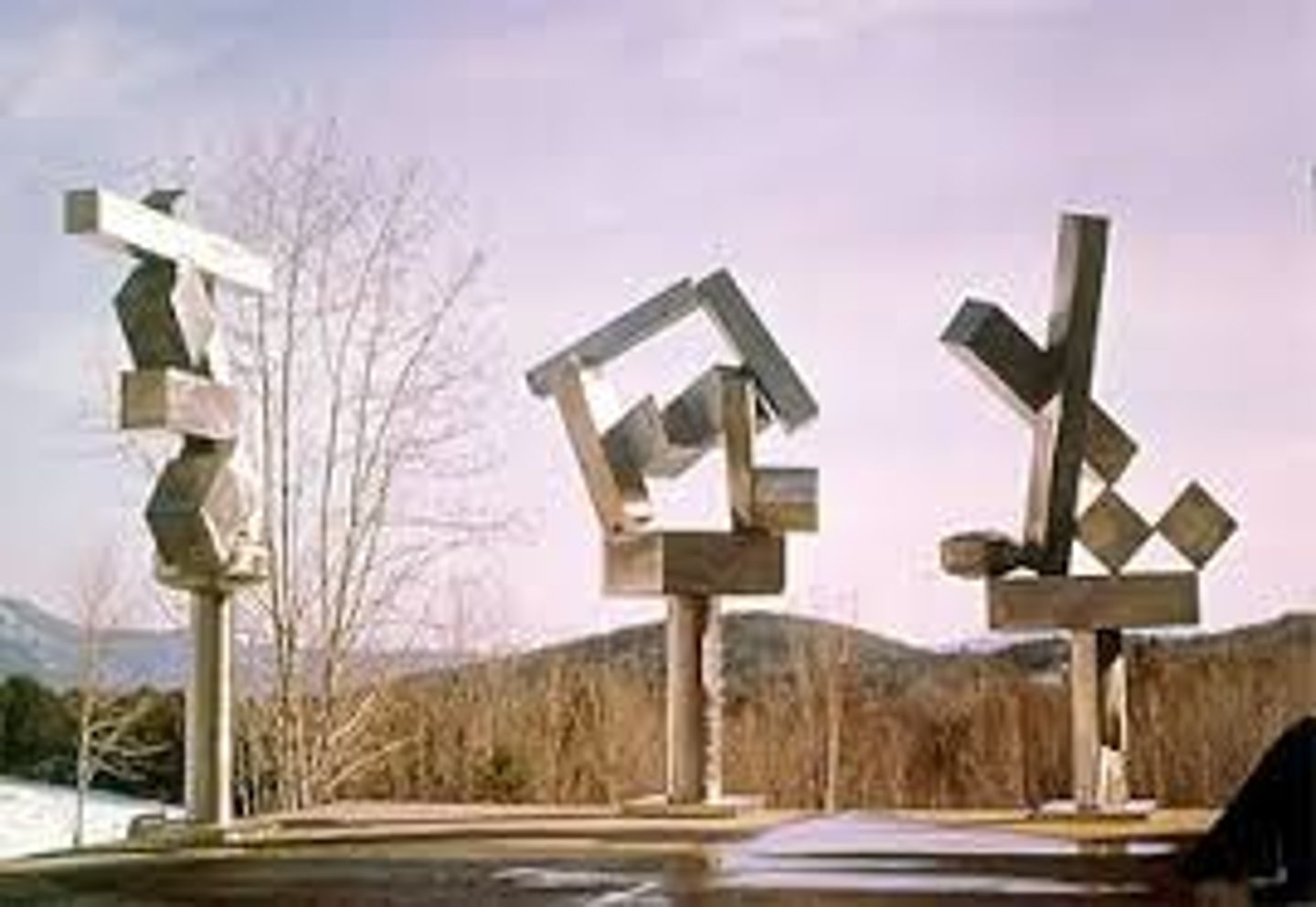
Volume
Can be best depicted using a line drawing of a cube without shading.
Issamu Noguchi
used balance to contribute most to the sense of tension embodied in "Red Cube".
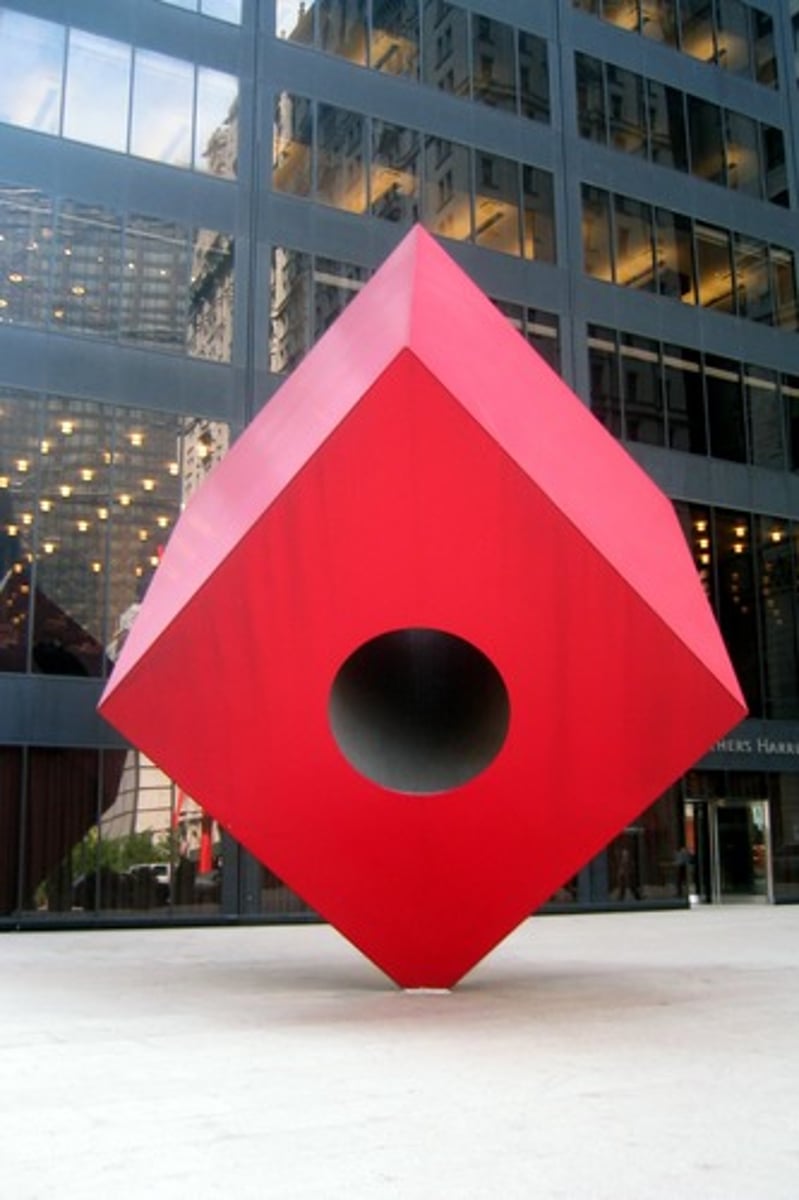
Using similar texture throughout the work is most likely to contribute to
unity in a piece of artwork
Dark, dull blue
would make orange appear brighter and lighter when surrounding it.
The Red Model by Renè Magritte
Disimilar elements are juxtaposed to create unsetting contrast.
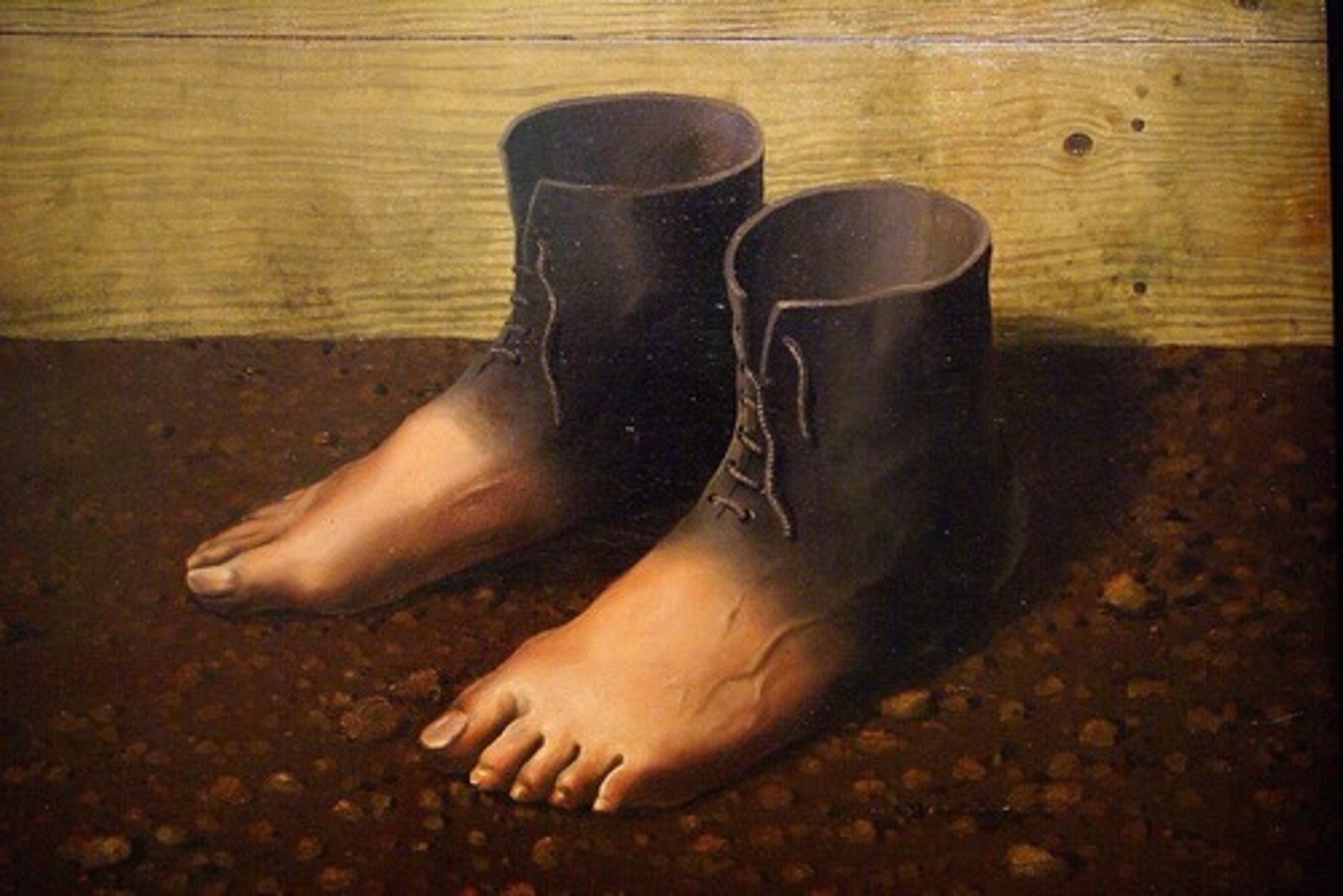
The focal point in Lilly Martin Spencer's "Benjamin Rush Spencer" (portrait drawing) is created primarily through the use of
Value
Foreshorten perspective
"Lamentation Over the Dead Chris"t by Andrea Mantenga
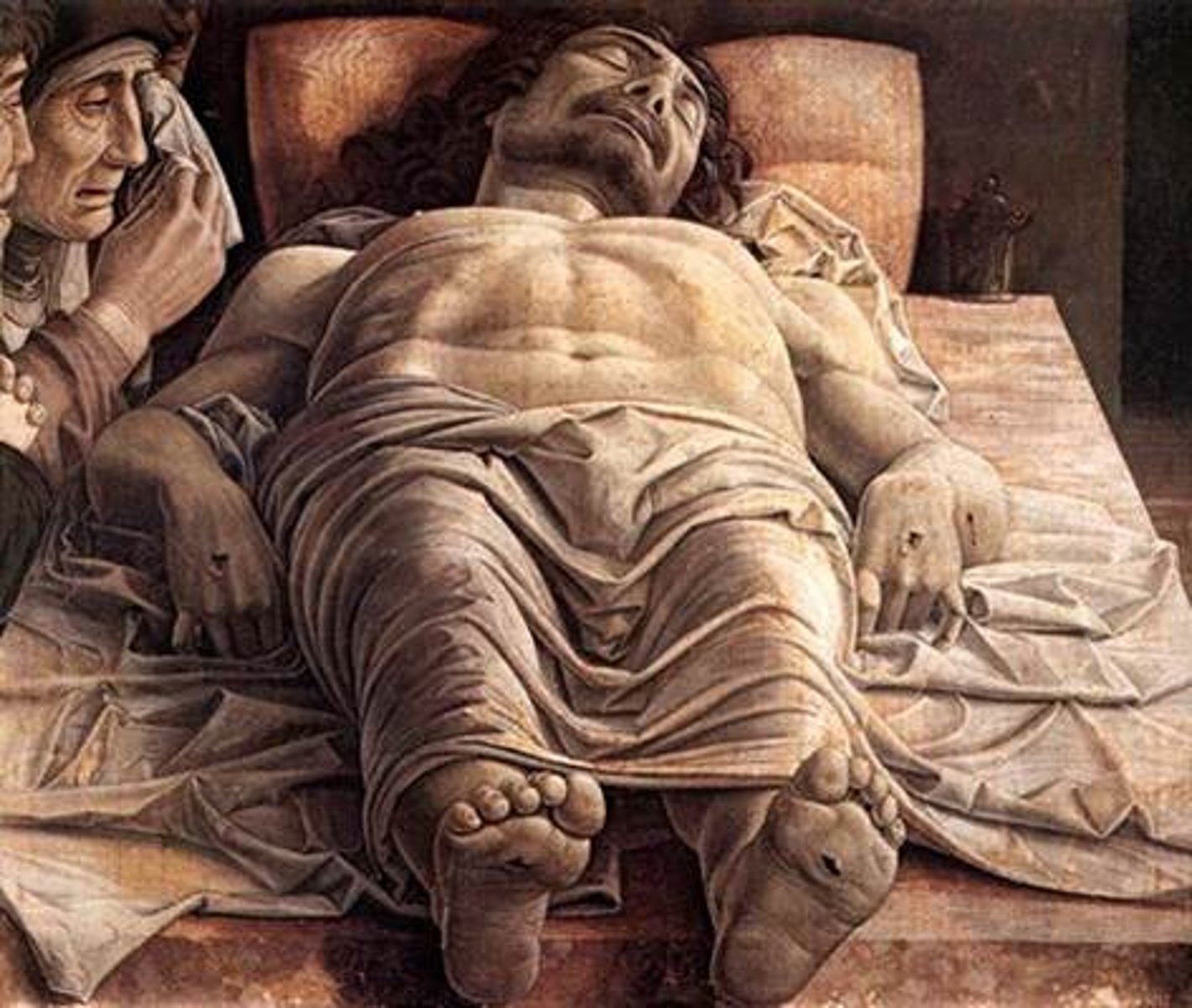
Tactile quality of a surface
Refers to its actual texture
Chiaroscuro
The technique that artists use to depict forms through gradations of pronounced light and dark value
Piet Mondrian's " The Red Tree"
Dynamic balance around a vertical axis
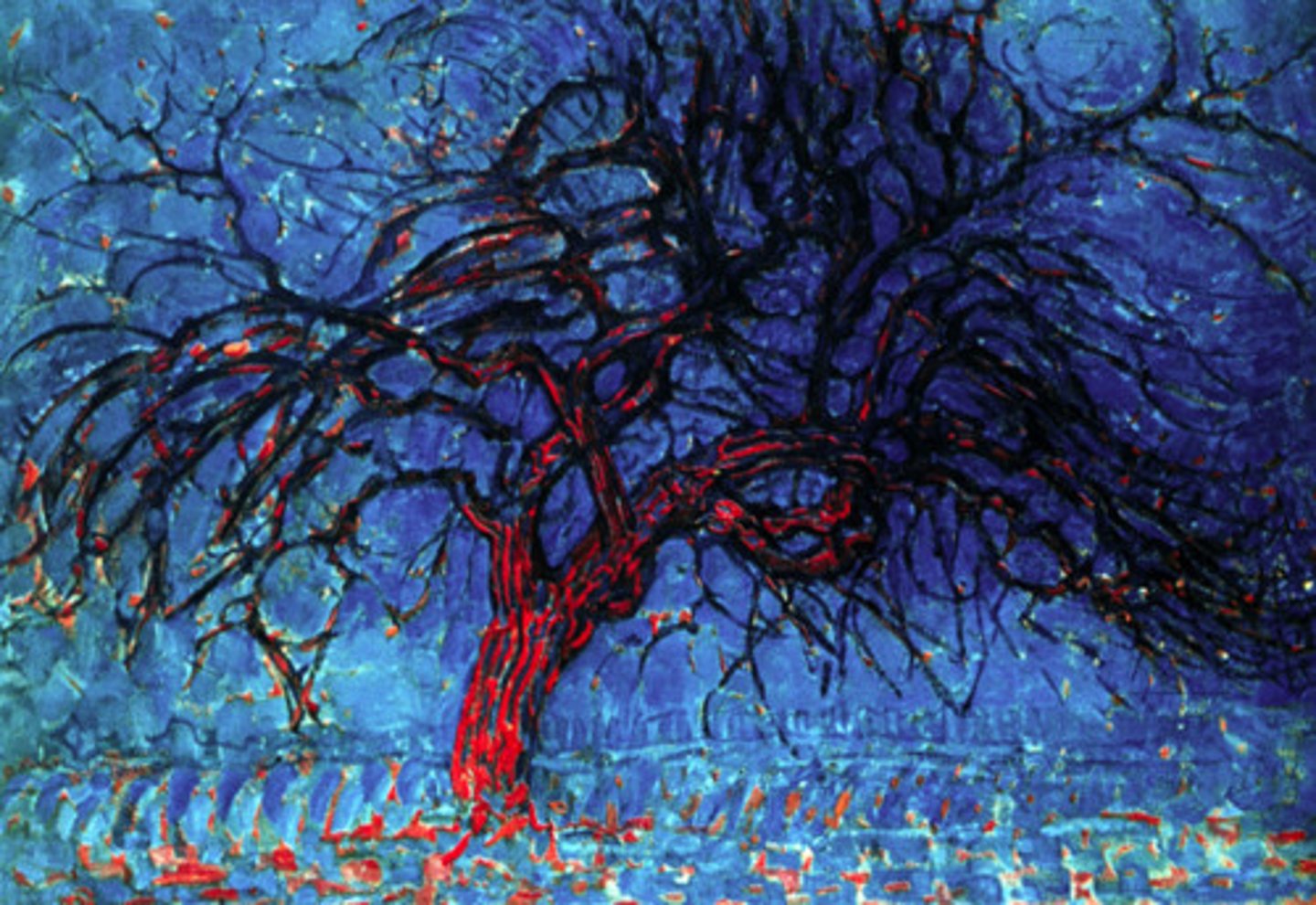
Shapes and colors are repeated to create a visual rythym
Jacob Lawrence's "The Barber Shop"
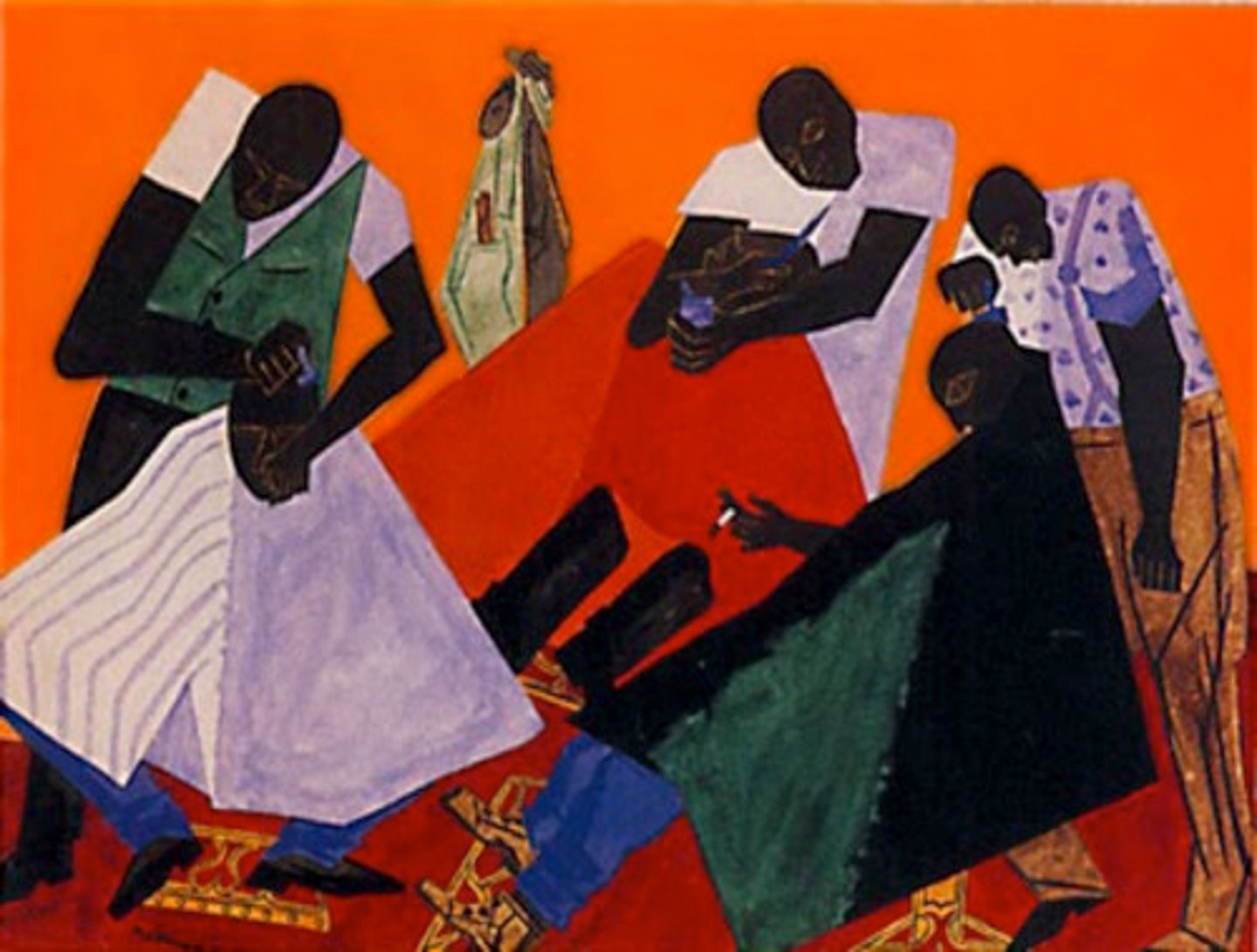
An uneven treatment of the surface texture is closely tied to the sculpture's expressive quality
Portarit of a head by Auguste Rodin
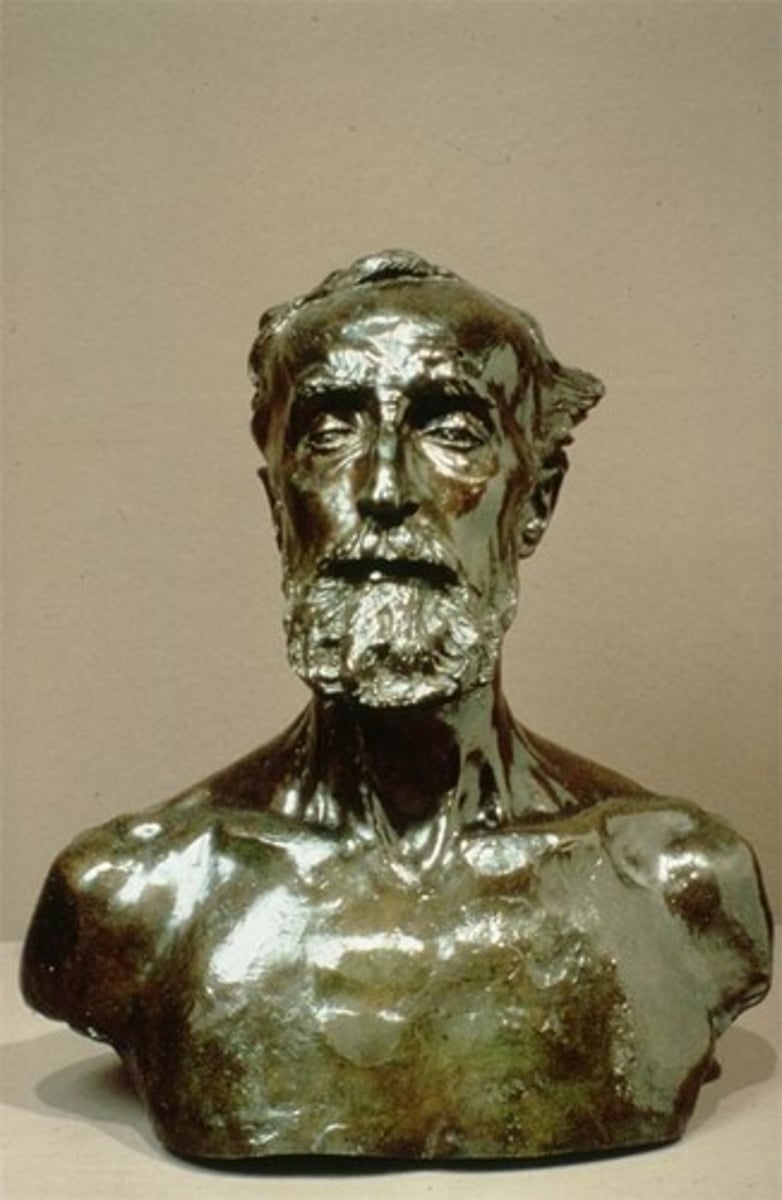
Tertiary color
the result of the mix between a primary color with a secondary color next to it on the color wheel.
The principle of appropriation
Refers to reusing found imagery
The composition is balanced with near symmetry around a focus on the game board
Most accurately characterizes the composition on the vessel
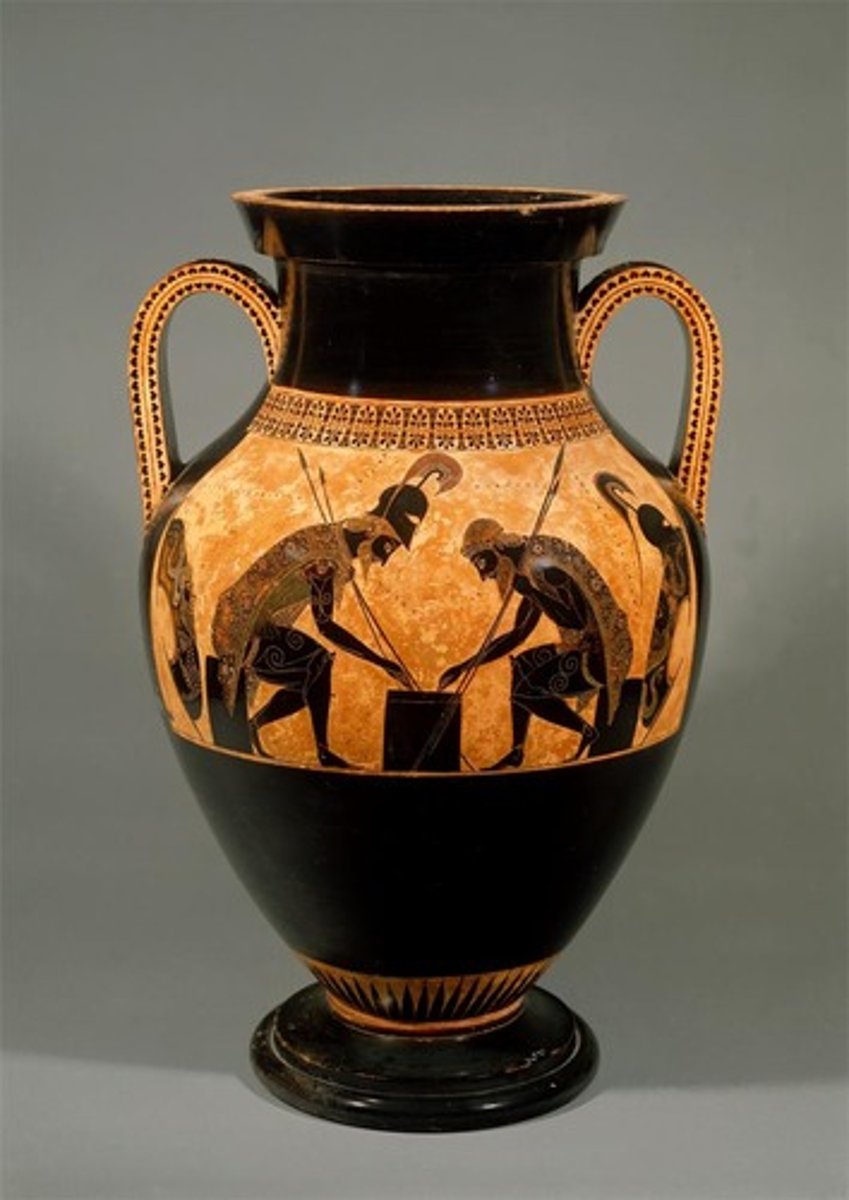
Varying the size and color of each rectangle
would be likely to provide the most visual interest when employed in the design of a composition that consists entirely of rectangles.
The use of flat color and dark outlines
Limit the depth of space in a two-dimensional artwork
Diagonal placement
contributes to the dynamic nature of the shapes in Kazimir Malevich's "Dynamic Suprematism"
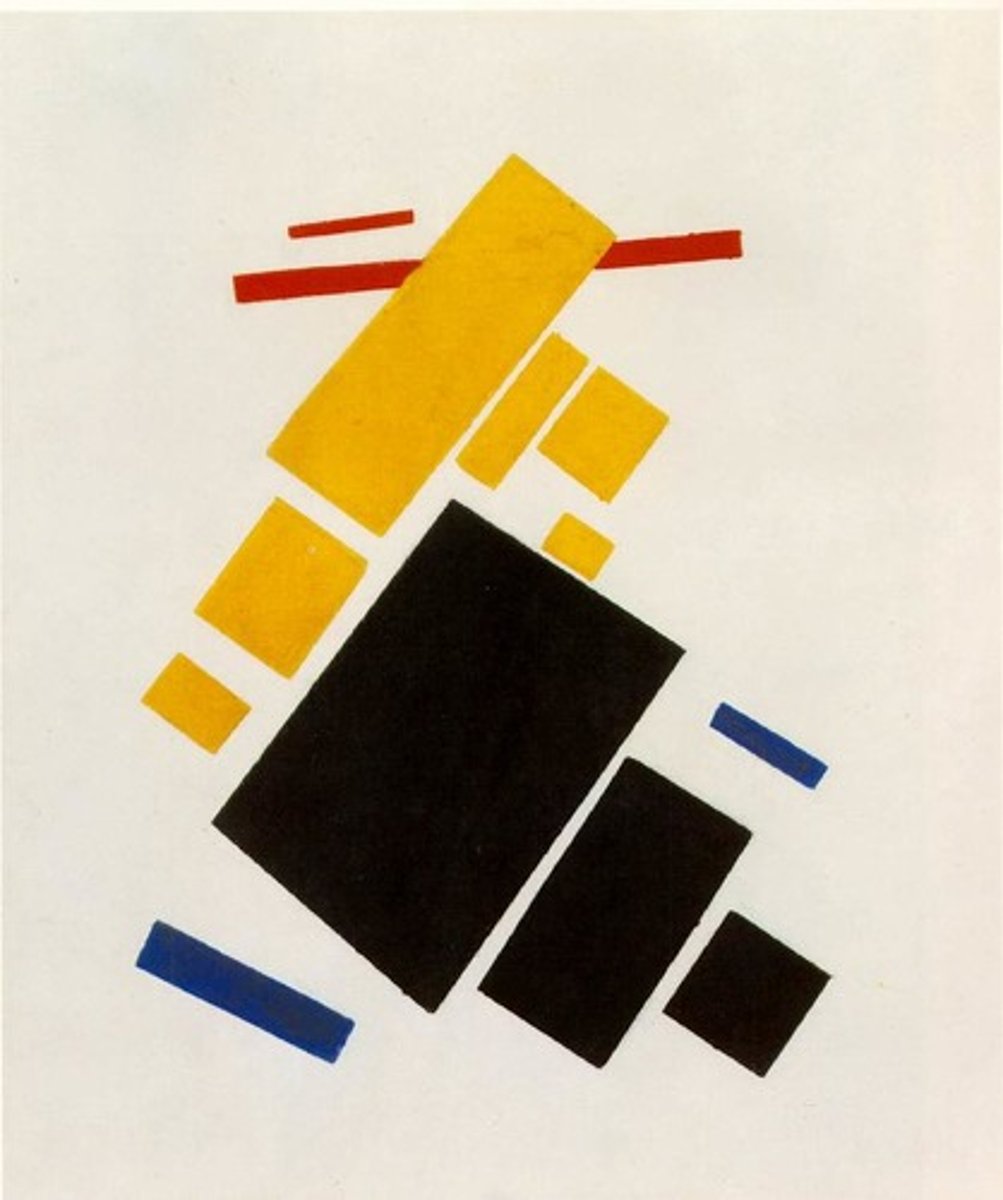
Abstraction
refers to an art-making approach that an artist can use to transform subject matter by reducing the composition to basic lines, shapes, and colors
In her painting "Judith & Holofernes", Shown, Artemisa Gentieschi drew attention to the painting's focal point, the beheading of Holofernes, primarily through
the use of lines created by the figures' limbs
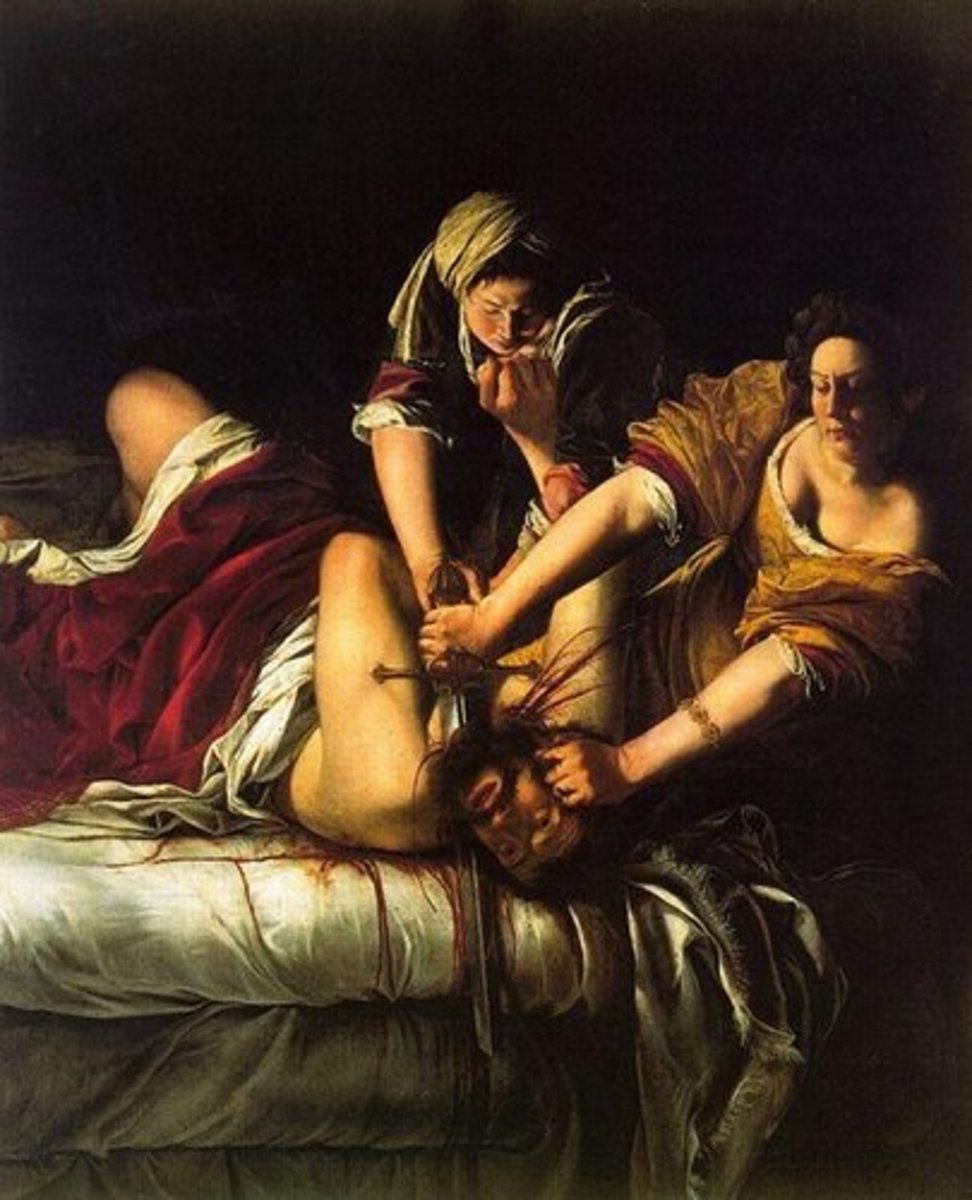
Three-point perspective
In a two-dimensional work of art, a bird's eye or worm's eye view of an object can best be achived by using
The rule of thirds
is a technique used to improve asymetrical balance in a photographic composition.
Hierachy of scale
is used in Benin sculpture
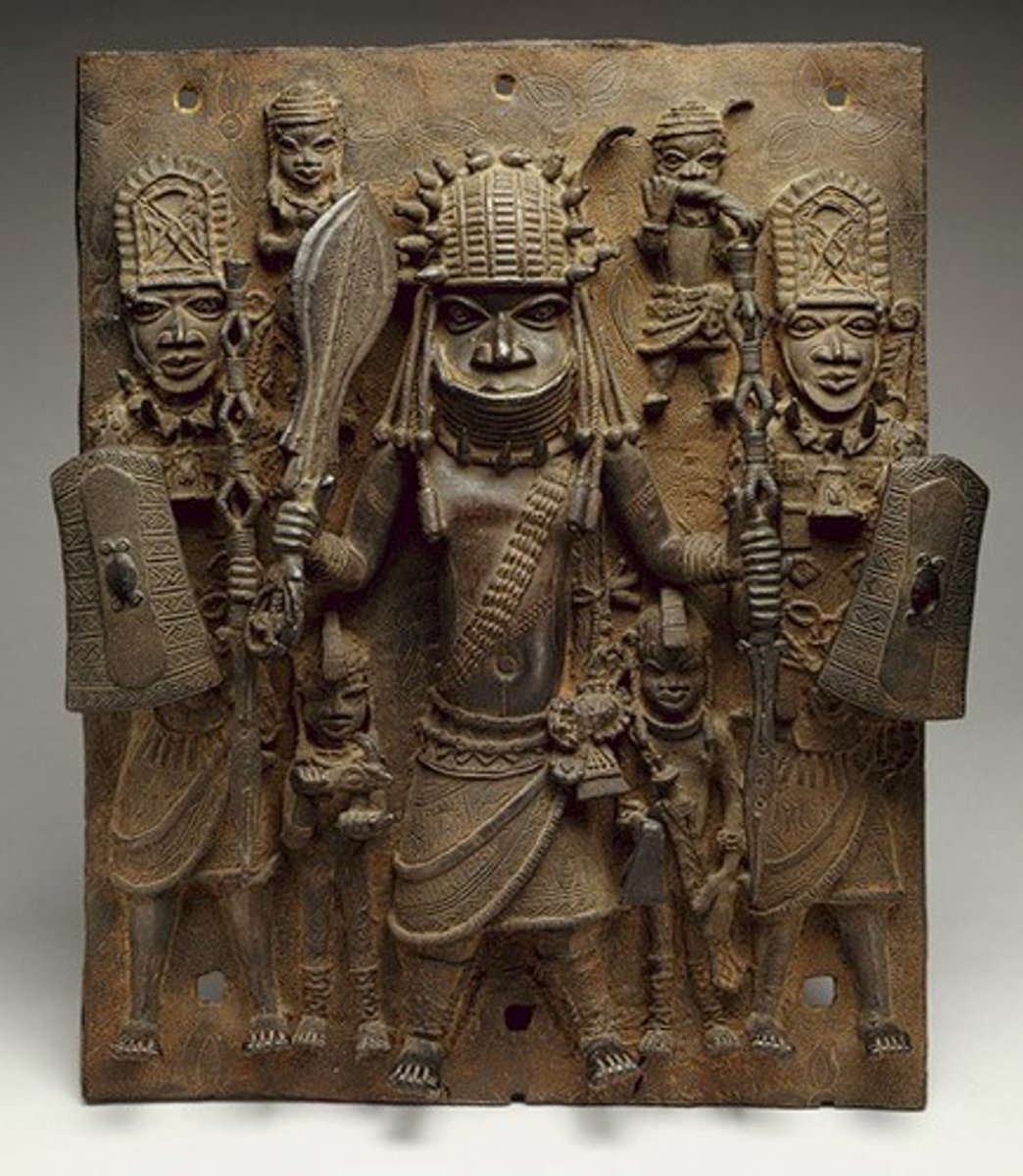
Size and color
is most used to create an illusion of deep space in a figure-ground relationship
A grid
For millennia, artists working in two-dimensions have transfered small compositions to larger surfaces through the use of it.
In addition to the shape created by the internal red lines on the illuminated manuscript page, the distinction between figure and ground is created through...
shifts in color relationship
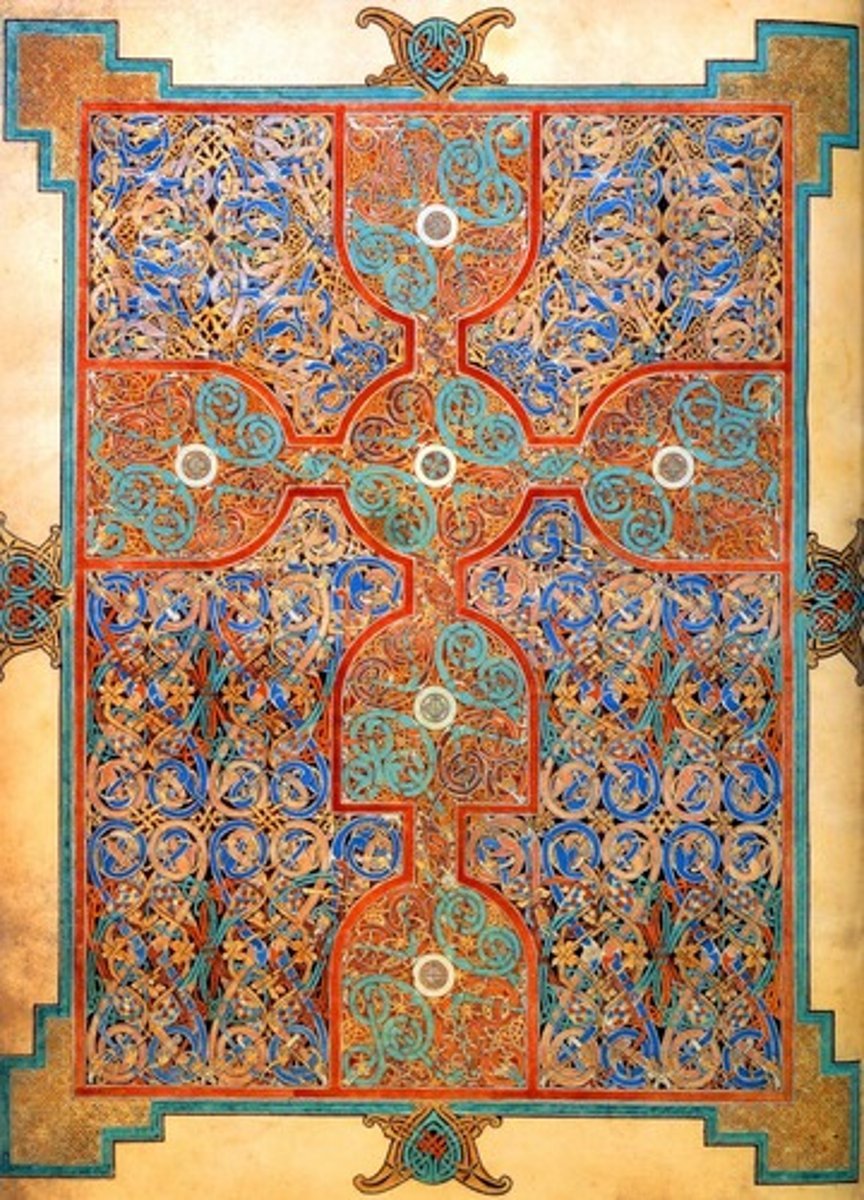
Mary Cassat and Edgar Degas
compose work so that the subject appears cropped due to exposure to photography
Artist must transform the three-dimensional forms into two-dimensional shape relationships
when composing a realistic drawing of three-dimensional forms on a flat surface such as paper.
The composition includes strong diagonals and pyramidal shapes. Extreme contrast of light and dark adds drama. The human figures are used as design composition elements.
Raft of the Medusa by Théodore Géricault

Juxtaposition of images to subvert the status quo
is the photomontage technique pioneered by Dada artists such as Hannah Hôch
The contrast between the contemporary figure and the traditional decorative motifs creates visual interest. The classical modeling of the background patterns overlapping the figure compress the spatial depth in the painting.
Kehinde Willey's "Alios Itzhak" (The World Stage: Israel)
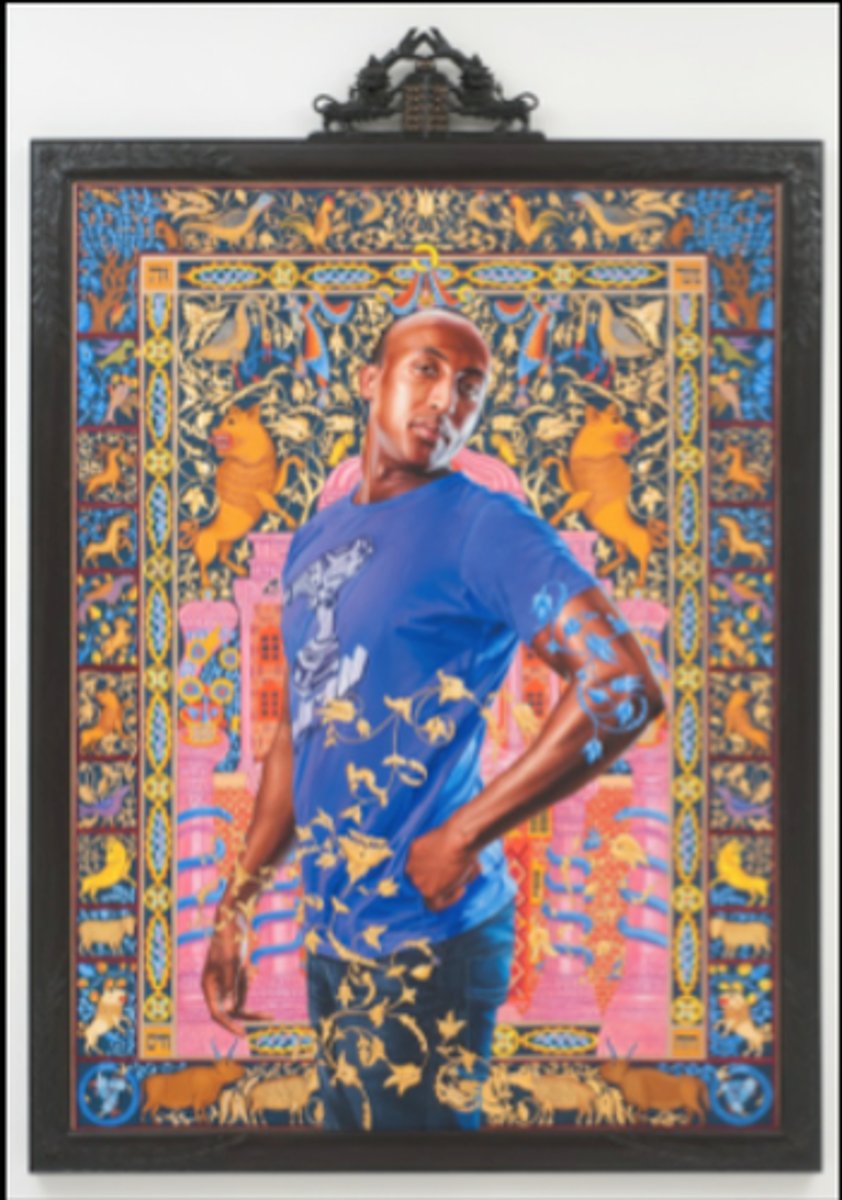
Slip
In ceramics, this term described a clay suspended in water.
Papier-Mâché
is a medium that involves gluying multiple layers of paper onto an armature.
A designer who carefully selects a typeface to use in a design is likely to be concerned with
the exact shapes of the letters
Bitmaps
In digital imaging, series of pixels that can be used to compose images.
Polarizing filter
Can be used to reduce or remove reflections.
Megapixel
one million pixels
The quality of a digital image printed on paper is most closely tied to
dots per inch (dpi) of in or toner on the paper
CMYK
Cyan, magenta, yellow and black
USB cables
Provides the most common interface between a computer and a printer.
The shtutter speed
Controls the length of time during which light can enter the camera.
Laquer and enamel
are often used to produce a hard, glossy finish.
Monoprinting
does not limit the artist to ither water-based or oil-based ink and it is well suited to the creation of loose and expressive images.
Collagraphy
is and additive printmaking process
A dry-brush painting application
would most likely to appear as obvious bristle marks, scratchy.
Tooth
Refers to the surface texture of paper.
Uderpainting
Can be described as establishing a toned ground on which to develop the painting.
Using oil pastels over gouache in drawing
Illustrates the principle of "fat over lean"
Baren and squeegee
is a pair of tools that are commonly used in printmaking.
Ansel Adam's "Marion Lake, King's County National Park, California"
Demostrates Adams use of a deep depth of field created by a small aperture.
Lithography
The process includes drawing on a plate with a greasy crayon and applying ink wich adheres to the crayon.
Vehicle
Refers to the liquid that holds pigment in suspension.
A linocut
Elizabeth Catlett's "Sharecropper"
